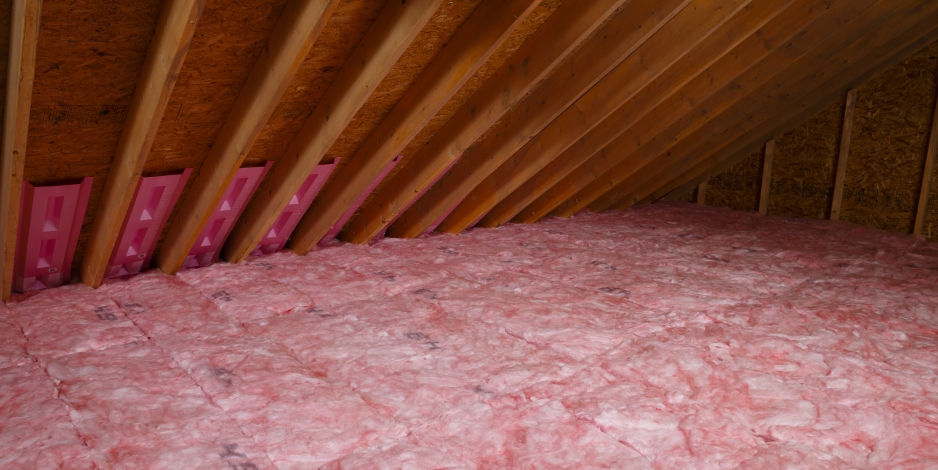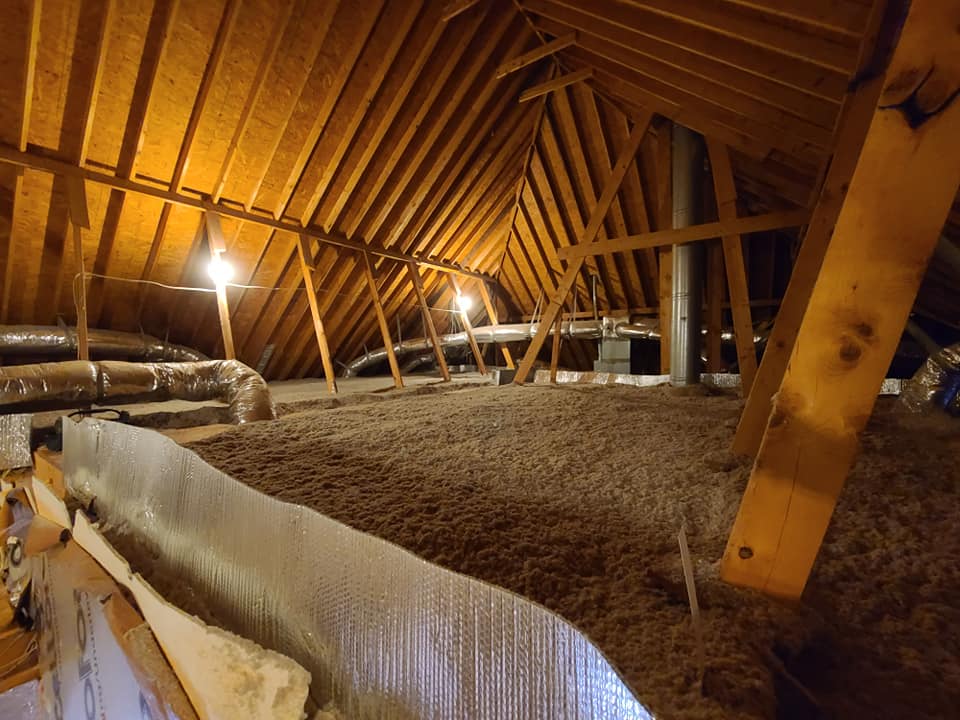How Attic Insulation DFW Can Change Your Home's Environment Control
Wiki Article
Discover the Various Types of Attic Insulation and Their Distinct Advantages for Your Home's Power Performance

Fiberglass Insulation
Fiberglass insulation is one of one of the most frequently used products for attic room insulation because of its excellent thermal performance and cost-effectiveness. Made up of tiny glass fibers, this material effectively traps air, developing an insulating obstacle that assists keep consistent interior temperatures. Its high R-value per inch makes it specifically reliable at resisting warmth transfer, which is critical for energy conservation in homes.
Setup of fiberglass insulation is reasonably uncomplicated, usually readily available in batts or loose-fill types, fitting various attic room setups. Additionally, it is immune and non-combustible to dampness, reducing the danger of mold and mildew growth. This sturdiness contributes to its longevity, making fiberglass a feasible long-lasting investment for home owners.
Moreover, fiberglass insulation is frequently manufactured from recycled materials, which improves its eco-friendliness. The product can likewise contribute to soundproofing, decreasing noise transfer between areas. While it is crucial to use protective gear during installation to prevent inflammation from the fibers, the general benefits of fiberglass insulation, including power cost savings and ecological considerations, make it a popular option for boosting attic room efficiency and advertising a comfy living atmosphere.
Spray Foam Insulation
Spray foam insulation is a very reliable choice for attic room insulation, known for its superior air sealing and thermal efficiency. This cutting-edge insulation material is made up of a combination of isocyanate and polyol material, which, when integrated, increases quickly to fill up spaces and cavities in the attic room room. Its capacity to follow different surface areas makes certain a continual barrier versus air leakages, dramatically decreasing warmth loss during colder months and warmth gain during warmer seasons.Among the essential benefits of spray foam insulation is its high R-value per inch, which suggests it supplies superb thermal resistance in a fairly thin application. This is especially advantageous in attics where room is often minimal. In addition, spray foam can aid minimize wetness build-up, lowering the risk of mold and mildew growth, which can be harmful to both the framework and indoor air top quality.
While the preliminary cost of spray foam insulation may be more than typical options, its lasting energy savings, combined with raised comfort and enhanced home value, make it a rewarding financial investment for property owners seeking boosted power performance. Attic Insulation DFW. Overall, spray foam insulation attracts attention as a reliable remedy for optimizing attic room insulation
Cellulose Insulation

Cellulose insulation is a prominent option for attic room insulation, primarily made up of recycled paper products treated with fire resistants. This eco-friendly alternative is understood for its superb thermal efficiency, successfully minimizing warm transfer in both summer season and winter season. The thick make-up of cellulose enables it to fill up voids and spaces in attic rooms, offering a seamless barrier against air leaks.
One of the considerable advantages of cellulose insulation is its capacity to withstand mold and insects, owing to the fire retardant treatments used throughout production. Additionally, it flaunts a high R-value per inch, which converts right into remarkable energy performance. Home owners can expect lower cooling and heating expenses as an outcome of improved insulation.
Setup is typically achieved via blowing loose cellulose into the preferred location, permitting a fast and effective process. This approach additionally lessens disruption to the existing framework. Cellulose insulation has a read here reasonably reduced ecological influence, as its production process utilizes recycled materials, adding to lasting building practices.
Rock Wool Insulation
Among the different alternatives for attic room insulation, rock woollen, likewise called mineral wool, sticks out due to its remarkable thermal and acoustic performance. Made from natural or recycled materials, rock wool is developed by thawing rock and rotating it right into fibers, causing a product that supplies superb insulation properties.One of the considerable advantages of rock wool insulation is its high R-value, which indicates its effectiveness in resisting heat flow. This characteristic not just enhances energy efficiency however additionally adds to preserving a comfortable interior temperature level year-round. Furthermore, rock woollen is inherently fireproof, making it a safer option for homes as it can withstand high temperatures without melting or launching toxic fumes.
Moreover, rock wool insulation succeeds in soundproofing abilities, effectively minimizing noise transmission between rooms and from outdoors resources. Generally, rock woollen insulation provides a thorough option for boosting energy effectiveness, safety and security, and convenience in domestic setups.
Radiant Barrier Insulation
Radiant obstacle insulation acts as an effective remedy for decreasing heat transfer in attics, especially in warmer climates. This sort of insulation jobs by reflecting glowing warmth away from living areas, therefore decreasing the amount of warmth that goes into a home throughout heat - Attic Insulation DFW. Usually composed of a very reflective material, such as aluminum foil, radiant barriers are installed in attics, dealing with the roof covering, where they can obstruct inbound heat from the sunlightThe key benefit of radiant barrier insulation is its capacity to reduced cooling expenses. By reflecting heat as opposed to absorbing it, glowing barriers can assist keep an extra stable indoor temperature level, reducing the work on air conditioning systems. This efficiency translates into lower energy expenses and boosted comfort for homeowners.
In addition to energy financial savings, radiant barriers can also add to boosted interior air high quality. By lowering heat accumulation, they assist minimize moisture degrees, which can prevent mold growth and improve useful content overall air circulation. When set up correctly, glowing obstacle insulation can be an important addition to read this any energy-efficient home, making it a worthy factor to consider for homeowners looking to enhance their attic room insulation approach.
Final Thought
In verdict, understanding the numerous kinds of attic insulation-- fiberglass, spray foam, cellulose, rock woollen, and glowing obstacles-- allows home owners to make educated choices pertaining to power efficiency. By choosing the appropriate insulation product, substantial reductions in energy expenses can be achieved, along with improvements in interior comfort.

In conclusion, recognizing the different types of attic room insulation-- fiberglass, spray foam, cellulose, rock wool, and radiant barriers-- makes it possible for homeowners to make enlightened choices relating to power efficiency.
Report this wiki page